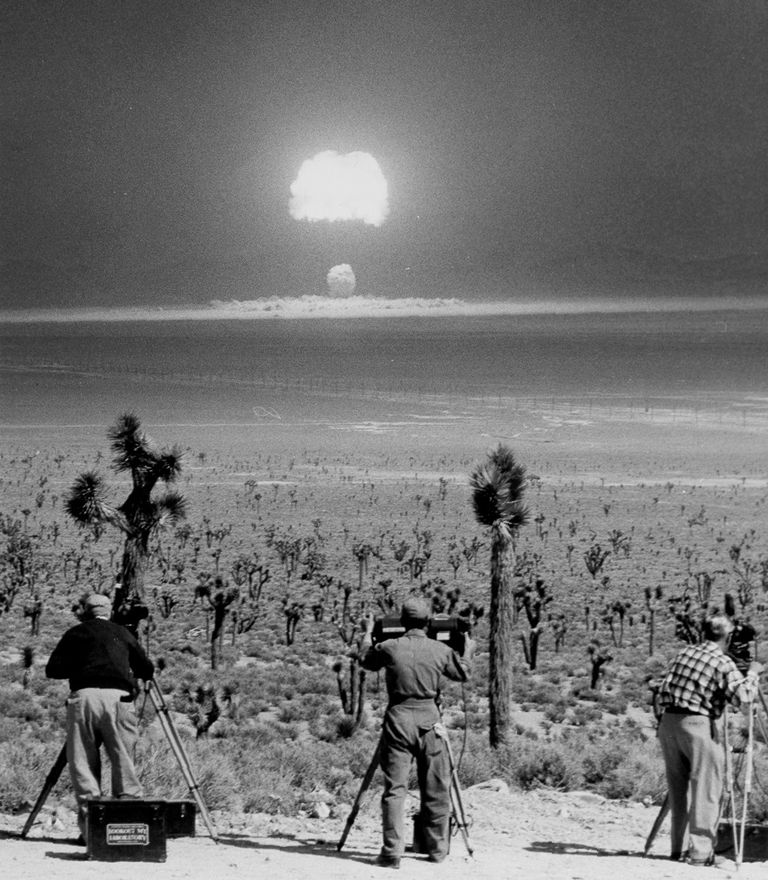During the early twentieth century, thousands of workers employed in the U.S. Nuclear weapons industry program were exposed to extremely harmful toxins, chemicals, and heavy metals with high radiation levels as part of their jobs. To help compensate workers who were injured as a result of their exposure, the federal government created The Energy Employees Occupational Illness Compensation Program Act (EEOICPA)
Programs included a series of above-ground nuclear tests in southern Nevada known as the Nevada test site. Several other sites know as island tests in the Atlantic and the Pacific and underground nuclear testing. Besides the hazardous blasting, uranium mining and processing operations that produced fuel for atomic warheads were also in demand due to the arms race. The U.S. Atomic Energy Commission oversaw the entire program.
Decades later, U.S. lawmakers sought to address the needs of those exposed to radiation due to all these program activities. In 1990, the U.S.established a program to provide financial benefits for eligible individuals who became seriously ill as a result of the U.S. nuclear testing conducted by the U.S. or from employment in the uranium industry during the Cold War era.
Since the original law was enacted, guidelines surrounding compensation claims have been updated and revised numerous times. Including an amendment that increases coverage to include uranium mill workers and transporters of ore. Raises the “downwinders” geographic area, lowers the radiation threshold for miners, and removes certain lifestyle restrictions. Additionally, a program was added, compensating Department of Energy workers and their contractors and subcontractors. They have had cancer and worked at one of its three hundred eighty facilities in one of the thirty-eight states.
The EEOICPA was created to compensate nuclear weapons workers employed by the Department of Energy (DOE) after 1941 and became ill due to exposure to toxic chemicals while working. Eligible individuals may obtain lump-sum payments and health benefits if they satisfy all criteria. Potential beneficiaries include current employees, former employees, contractors, and subcontractors.
If a worker has already passed, his or her surviving family members may also obtain compensation. EEOICPA is made up of two benefit plans, Part B and Part E. Under Part B, employees or their survivors may receive a lump-sum payment of up to $150,000 and reimbursement for full medical expenses. Beneficiaries under Part E can receive an even more considerable sum of 250,000 dollars. Furthermore, those who qualify under the Radiation Exposure Compensation Act (RECA) may also be eligible to receive a smaller sum of $50,000.
Only workers who satisfy specific requirements can obtain compensation under the EEOICPA. A claimant must have been diagnosed with cancer or an additional illness produced by chemicals and have operated at a covered DOE facility to qualify. In Particular, an employee must have sustained one of the following illnesses while employed by a DOE facility, an atomic weapons employer, and/or a beryllium vendor.
Furthermore any surviving family member of a deceased worker may also file a claim on that person’s behalf. However, the survivor’s definition differs depending on whether a claimant is filing under Part B or Part E.
Under Part B, survivors can include any of the following individuals:
Under Part E, survivors can include any of the following individuals:
Working in such locations like Nevada Test Site and other atomic test sites have given rise to such awareness to risks involving radiation.
Radiation containing ample energy to damage DNA and cause cancer is called ionizing radiation. This type of radiation was released in nuclear power plant accidents, production of, testing, and the use of the actual atomic weapon.
The evidence that ionizing radiation causes cancer comes from many studies of atomic bomb survivors and workers employed in certain professions. Some professions, such as uranium miners, transporters, and millers, just to name a few. Data suggest that any part of the body can be affected by ionizing radiation.
Most recently, fears about this type of radiation exposure extend beyond the exposed individual’s health risk. This fear has expanded to possibly impact the children, grandchildren, and spouses of these exposed workers.
Future studies involving Nevada Test Site workers and their families may help link certain congenital conditions and health risks like cancer back to the parent or grandparent who was initially exposed to the radiation. These studies are on going.

There are a broad variety of cancers and illnesses covered by the numerous United States Government cancer benefit programs. Due to the vast amounts of different types of exposure ranging from being downwind at a Nevada Test Site, or just transporting uranium this list is still possibly growing.
Note: Not all cancers and illnesses are covered by all benefit programs. For more information about these programs please follow the corresponding link below:

If the employee is no longer living, the compensation is payable to eligible survivors.
Compensation of $50,000 and payment of medical expenses from the date a claim is filed is available for :
Employees of the Department of Energy, its contractors and subcontractors who were exposed to beryllium on the job and now have beryllium sensitivity will receive medical monitoring to check for Chronic Beryllium Disease
Compensation and payment of medical expenses is available to employees of DOE contractors and subcontractors, or their survivors, who develop an illness due to exposure to toxic substances at certain DOE facilities. Uranium miners, millers, and ore transporters are also eligible for benefits if they develop an illness as a result of toxic exposure and worked at a facility covered under Section 5 of the Radiation Exposure Compensation Act (RECA). Under Part E, a toxic substance is not limited to radiation but includes things such as chemicals, solvents, acids and metals.
Variable compensation up to $250,000 is determined based on wage loss, impairment, and survivor-ship.
Total survivor compensation not to exceed $175,000.
Eligible survivors may receive compensation if the employee’s death was caused, contributed to or aggravated by the covered illness. Eligible survivors include:
If there is no surviving spouse, then compensation may be awarded to a covered child if, at the time of the employee’s death, the child was:
Medical expenses are not included in the $250,000 cap.
In every life situation we have a choice as to how we react. At no time is this more profound than in facing the end of life of a loved one.
These months, days, weeks and moments can be among life’s most precious and that is precisely the reason that Nevada Hospice Care exists.
Subscribe to our Newsletter for new offers and Updates!
© 2020 – Nevada Hospice Care | All Rights Reserved | Privacy Policy | Terms and Conditions